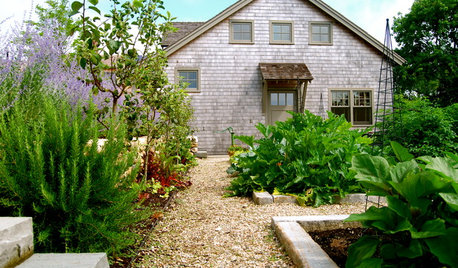Garden Soil Testing Frequency.......
cugal
10 years ago
Related Stories

GARDENING GUIDESGet the Dirt on Your Garden’s Soil
Understand how your soil supports your plants so you can ensure your garden’s success
Full Story
GARDENING GUIDESGardening Solutions for Dry, Sandy Soils
Has your desert or beachy site withered your gardening creativity? Try these ideas for a beautiful, easy-care landscape
Full Story
GARDENING GUIDESHave Acidic Soil in Your Yard? Learn to Love Gardening Anyway
Look to acid-loving plants, like conifers and rhododendrons, to help your low-pH garden thrive
Full Story
GARDENING GUIDESHow to Stop Worrying and Start Loving Clay Soil
Clay has many more benefits than you might imagine
Full Story
FARM YOUR YARDHow to Get Good Soil for Your Edible Garden
The nutrients in your soil feed the plants that feed you. Here are tips on getting it right — just in time for planting season
Full Story
GARDENING GUIDESGrow a Beautiful Garden in Alkaline Soil
Got alkaline soil? Learn how to manage it and the many beautiful plants that will thrive in this ‘sweet’ soil
Full Story
GARDENING GUIDESGardening Solutions for Heavy Clay Soils
What’s a gardener to do with soil that’s easily compacted and has poor drainage? Find out here
Full Story
LANDSCAPE DESIGNHow to Shape a Rain Garden and Create the Right Soil for It
Learn how to grade, lay out and amend the soil in your rain garden to support your plants
Full Story
GARDENING GUIDESThe Poop Scoop: Enrich Your Soil With Good Old Manure
Get over the ick factor already — this natural super-ingredient for soil has so many benefits, you'll wonder why you ever went chemical
Full Story
GARDENING GUIDESThe Simple Secret to Gardening Success
Learn the kinds of soil and a DIY type test to make sure you’re putting the right plant in the right place
Full StorySponsored
Franklin County's Custom Kitchen & Bath Designs for Everyday Living
More Discussions







JonCraig
Kimmsr
Related Professionals
Accokeek Landscape Architects & Landscape Designers · Comstock Park Landscape Architects & Landscape Designers · Ballenger Creek Landscape Architects & Landscape Designers · Anderson Landscape Contractors · Avocado Heights Landscape Contractors · Azalea Park Landscape Contractors · Elkridge Landscape Contractors · Lakewood Landscape Contractors · Pikesville Landscape Contractors · New Carrollton Landscape Contractors · Fort Myers Decks, Patios & Outdoor Enclosures · Parker Decks, Patios & Outdoor Enclosures · Schaumburg Decks, Patios & Outdoor Enclosures · South Lyon Decks, Patios & Outdoor Enclosures · Westford Decks, Patios & Outdoor Enclosuresericwi
toxcrusadr
cugalOriginal Author
jean001a
Kimmsr
cugalOriginal Author
cugalOriginal Author
toxcrusadr
cugalOriginal Author
glib
old_dirt 6a
Kimmsr
toxcrusadr
cugalOriginal Author
pnbrown
cugalOriginal Author
toxcrusadr
marshallz10
seysonn
c6-zr1
toxcrusadr
cugalOriginal Author
pnbrown
marshallz10
toxcrusadr
marshallz10
cugalOriginal Author